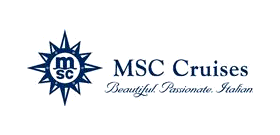 MSC Euribia’s African Detour Signals New Era for Middle East Cruises and Regional Port Collaboration
MSC Euribia’s African Detour Signals New Era for Middle East Cruises and Regional Port Collaboration
The MSC Euribia, one of the most advanced vessels in the MSC Cruises fleet, is charting a bold new course this season, bypassing the troubled Red Sea and instead tracing Africa’s coastline en route to the Arabian Gulf. This strategic rerouting, prompted by ongoing security concerns in the Red Sea, is not only a testament to the cruise line’s adaptability but also a reflection of the shifting dynamics in global cruise itineraries—a development with significant implications for Africa’s maritime and tourism sectors.
Originally, the MSC Euribia was scheduled to reposition from Northern Europe to Dubai via the Suez Canal and the Red Sea, a route long favored for its efficiency and historical significance. However, escalating tensions and security threats in the region forced MSC Cruises to cancel these plans, opting instead for a longer, yet safer, journey around the African continent. The vessel departed Northern Europe in mid-October, making a technical call in Las Palmas de Gran Canaria before arriving in Durban, South Africa, for another stopover. From there, the ship is continuing up Africa’s eastern coast, bound for the United Arab Emirates, where it will commence its 2025/26 Middle East season on November 8th in Dubai.
This rerouting is more than a logistical adjustment; it highlights the growing importance of Africa’s ports as strategic waypoints for global cruise operations. Durban’s role as a technical stopover underscores the city’s capacity to support large, modern vessels like the MSC Euribia, which can accommodate up to 4,888 passengers and is powered by liquefied natural gas (LNG)—a nod to the industry’s increasing focus on sustainability and environmental stewardship.
Once in the Arabian Gulf, the MSC Euribia will embark on a series of seven-night itineraries, connecting key destinations such as Dubai, Abu Dhabi, Sir Bani Yas Island, Doha, and Khalifa Bin Salman in Bahrain. This marks the vessel’s second consecutive winter deployment in the region, following a successful debut last year. The programme, running through early April, is expected to attract a diverse international clientele, further cementing the Gulf’s status as a premier winter cruise destination.
The decision to reroute the MSC Euribia is emblematic of broader disruptions affecting cruise lines operating in and around the Red Sea. Several operators, including Costa Cruises and AIDA Cruises, have opted to cancel their 2025/26 Middle East seasons entirely, citing persistent security risks. Others, like Celestyal Cruises, are experimenting with modified itineraries that involve disembarking passengers in Jeddah, Saudi Arabia, before continuing to the Gulf. TUI Cruises, meanwhile, has adopted a strategy similar to MSC, repositioning ships around Africa with guests on board.
For Africa’s travel industry, these developments present both challenges and opportunities. On one hand, the continent’s ports—particularly those in South Africa—are gaining visibility as essential nodes in global cruise networks. Durban’s successful handling of the MSC Euribia’s technical stop demonstrates the region’s growing capability to accommodate large-scale cruise operations, a trend that could spur further investment in port infrastructure and related services. On the other hand, as highlighted by industry leaders, there remain concerns about the adequacy of African port facilities for the largest vessels, suggesting a need for continued upgrades and regional collaboration .
The Arabian Gulf’s emergence as a winter cruise hub is also noteworthy. Dubai and Abu Dhabi have invested heavily in expanding their cruise terminals, enhancing shore excursion offerings, and fostering closer cooperation among regional ports. These efforts are paying off, with the Gulf now attracting a steady stream of international cruise passengers during the winter months. The MSC Euribia’s return to the region underscores the Gulf’s resilience and appeal, even as other markets face uncertainty.
From an environmental perspective, the MSC Euribia stands out as a model of modern cruise ship design. Delivered in 2023, the vessel is powered by LNG and equipped with advanced energy-efficient systems aimed at reducing emissions. This aligns with the broader industry push toward sustainability—a trend that is increasingly important to both regulators and travelers. For African ports, accommodating such vessels may require further investment in bunkering and support infrastructure, presenting both a challenge and an opportunity for growth.
Looking ahead, the MSC Euribia is set to return to Europe in April, once again bypassing the Red Sea and sailing around Africa to reach Northern Europe for her summer deployment in the Norwegian fjords. This pattern of seasonal repositioning, shaped by geopolitical realities, is likely to persist as cruise lines prioritize safety and operational flexibility. For Africa’s travel sector, this means staying attuned to global trends, investing in infrastructure, and exploring new partnerships that can leverage the continent’s strategic location at the crossroads of major maritime routes.
Ultimately, the MSC Euribia’s African detour is more than a temporary response to regional instability; it is a signal of the evolving landscape of global cruise tourism. As security concerns reshape traditional routes, Africa’s ports have a unique opportunity to position themselves as indispensable partners in the industry’s future. By embracing innovation, sustainability, and regional cooperation, the continent can play a pivotal role in shaping the next chapter of international cruising—one that promises both economic growth and enhanced connectivity for Africa and beyond.
